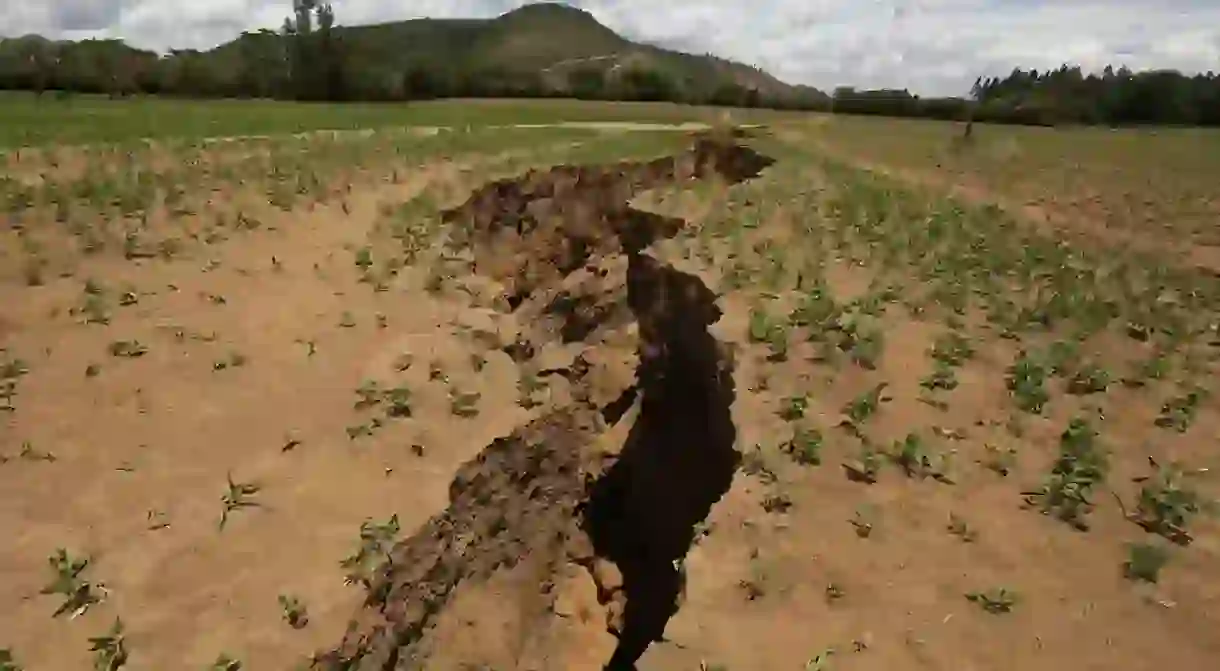Will This Crack in the Ground Form a New Continent?

It may sound unbelievable but Africa will eventually become two continents. Geologists have known this for ages, but now even the lay person in Kenya is starting to grapple with the reality of this possibility.
Following the seasonal long rains in Kenya, which last from March to May, it is not uncommon for the rain to cause flooding and wreak quite a bit of havoc nationwide. A flooded river here, a mudslide there, and great deal of traffic everywhere. This year’s downpour, however, will go down in history, as it led to the revelation of a huge crack in the Great Rift Valley in Narok County.

Will one continent eventually become two?
All indications show that Africa will split in two. Geologist have explained that the crack, measuring 50 feet (15 meters) deep and 65 feet (23 meters) wide, is actually a fault line in some sections, providing further evidence that indeed the continent is in the process of splintering into two separate parts.
In geology, things may sound like fiction or appear farfetched to the lay person—especially when the impending split will take 50 million years to be actualized. Yet Residents of Narok County know all too well how geology can affect them, as the crack passed right through some of their houses.

What does history say?
History has it that South America and Africa were one land mass until 138 million years ago, when the land broke in two as a result of earth splits, which are not out of the ordinary. Although the Great Rift Valley is massive, it is not the only rift of its kind. Others include the Rio Grande rift in the US, the Baikal Rift Zone in Eastern Russia, and the West Antarctic Rift, an active rift valley between East and West Antarctica.
The Great Rift Valley in Kenya is actually an active developing rift that runs all the way to the Gulf of Aden in Mozambique—a stretch that covers thousands of kilometers. An active developing rift means that the Earth’s lithosphere crust is slowly but surely eroding. This will eventually lead to faulting, thanks to a stretched sea floor and a break in topography. This also means there will be more cracks, as infrastructure and natural elements continue to place pressure on existing fault lines.
As faulting in the East African Rift System (EARS) continues, the continent will eventually break in two, with the bigger chunk of the African land mass remaining on what is referred to as the Nubian Plate, whereas the other chunk of land mass will be on the Somali Plate, and will include Somalia, parts of Kenya, Tanzania and Ethiopia.

What can we do?
As humans, we must accept nature’s machinations and prepare as best we can. Just because we cannot visibly see the breaking occur doesn’t mean it is not underway. From decade to decade, the urgency of this reality can be seen in dramatic events, such as massive earthquakes, and fault lines shattering motor highways and buildings.
These events are a culmination of gradual, natural tectonic actions we may not notice, even though continental rifting is on course. Fortunately for those living in Kenya, the complete separation of the Nubian tectonic plate and the Somali tectonic plate is expected to happen over the course of 50 million years—meaning we still have time to put our houses in order.













